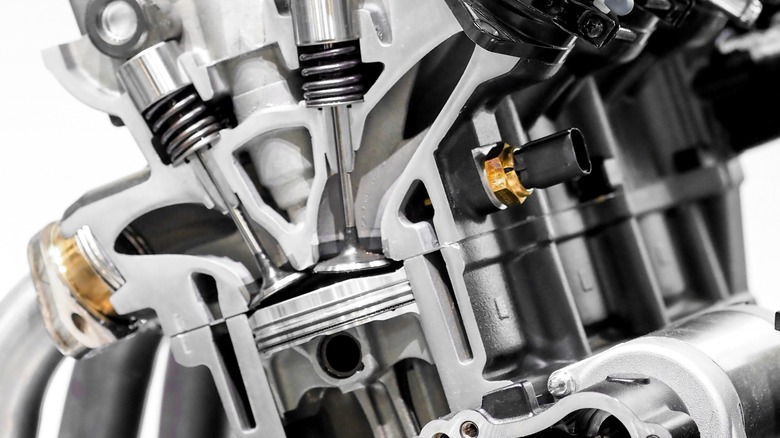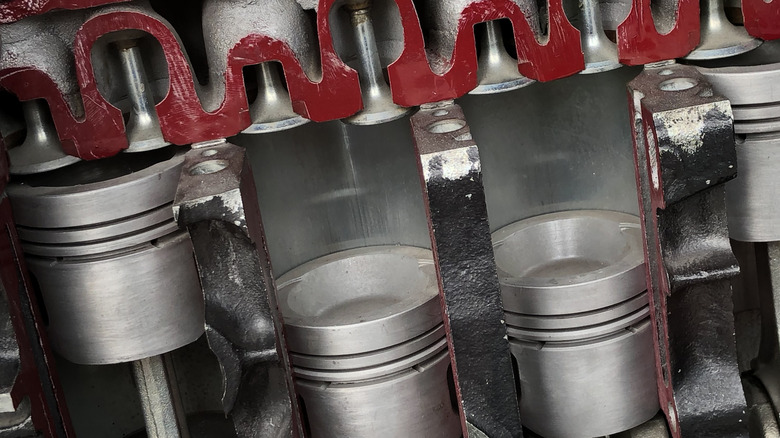
OkFoto/Shutterstock
An interference engine is one in which the valves and the pistons operate within the same space inside the cylinder. The timing belt or chain regulates the movement of these internal engine parts so that they cannot occupy the same space at the same time. The valves extend when the pistons are in a lower position, and they retract when the pistons come up higher within the cylinder. Under normal conditions, the valves and pistons will not make contact with each other — unless the timing belt or chain malfunctions.
Advertisement
Most of the engines in today’s vehicles are interference engines. The reason for this is one word – performance. Interference engines allow for a higher compression ratio and larger valves that can open further to provide better engine breathing. An interference engine design is also good for lower emissions and improved fuel economy.
But if the timing belt fails or the timing chain «jumps time» and gets out of sync, the pistons can collide with the valves, causing major and expensive engine damage. As to how long timing chains last and do they need to be replaced, proper vehicle maintenance should allow the timing chain to last as long as the engine. Vehicles that use timing belts must have them changed at the manufacturer’s recommended interval, usually every 60,000 to 100,000 miles.
Advertisement
How is an interference engine different from a regular engine?

Jasmin Merdan/Getty Images
A regular non-interference engine, also known as a «free-running» or «freewheeling» engine, is designed so that the valves and the pistons will never occupy the same space within the cylinders. This means, if your engine’s timing belt is bad or the timing chain malfunctions, it will be impossible for these engine parts to come into contact with each other. Repairs usually consist of replacing the belt or chain and any related parts, then re-syncing the pistons with the valves, so the proper operation of the engine is restored. This is typically a much less expensive repair than if it had happened to an interference engine.
Advertisement
To recap, interference engines tend to produce more power with better fuel economy and lower emissions, but with the looming threat of catastrophic engine damage should a timing belt or timing chain fail. While most people are unlikely to base a car-buying decision on the interference/non-interference engine issue, what we can take away from this is the need to keep track of your car’s maintenance schedule (including your timing belt or chain) as directed by your vehicle’s manufacturer. That way, whatever type of engine you purchase, it should last a long time without any major problems.